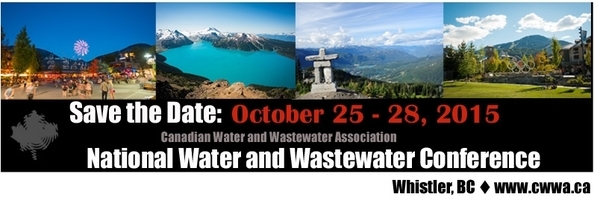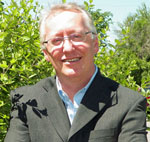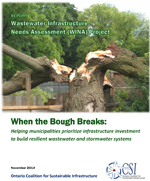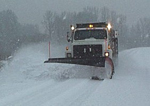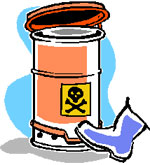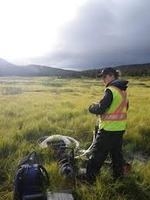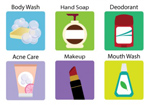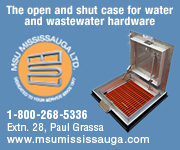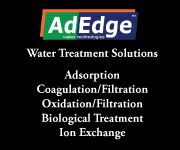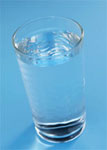Visit https://www.naylornetwork.com/cww-nwl/articles/index.asp?aid=303806&issueID=40410 to view the full article online.
Visit https://www.naylornetwork.com/cww-nwl/articles/index.asp?aid=304041&issueID=40410 to view the full article online.
|
The Window on Ottawa is truly our signature event that meets two of our core goals – to educate our members on national level activity and to facilitate dialogue with the federal government and its agencies. This very informative event allows delegates to hear the latest news from key members of federal departments and agencies. We get the details of recent legislation, but more importantly, we hear about what is in the development stages and can provide comments. Visit https://www.naylornetwork.com/cww-nwl/articles/index.asp?aid=304043&issueID=40410 to view the full article online.
|
Visit https://www.naylornetwork.com/cww-nwl/articles/index.asp?aid=303882&issueID=40410 to view the full article online.
|
Visit https://www.naylornetwork.com/cww-nwl/articles/index.asp?aid=303810&issueID=40410 to view the full article online.
|
This protocol establishes a framework for developing Canadian Groundwater Quality Guidelines that ensures an appropriate level of protection for both human and environmental receptors. It is a companion to A Protocol for the Derivation of Environmental and Human Health Soil Quality Guidelines (CCME, 2006) which should be consulted for additional background and underlying principles. Visit http://ceqg-rcqe.ccme.ca/en/index.html to view the full article online.
|
Visit https://www.naylornetwork.com/cww-nwl/articles/index.asp?aid=303813&issueID=40410 to view the full article online.
|
Visit https://www.naylornetwork.com/cww-nwl/articles/index.asp?aid=303815&issueID=40410 to view the full article online.
|
Visit https://www.naylornetwork.com/cww-nwl/articles/index.asp?aid=303884&issueID=40410 to view the full article online.
|
Visit https://www.naylornetwork.com/cww-nwl/articles/index.asp?aid=303845&issueID=40410 to view the full article online.
|
Building on a previous water efficiency collaboration between EDF and AT&T, WaterMAPP is an MS Excel-based, multi-tabbed spreadsheet with two primary components; the Water Scorecard to assess the water efficiency for buildings and create visibility for water use performance at facilities; and the Water Efficiency Calculator to estimate water and financial savings from cooling tower or free-air cooling improvements - key data for making the water-efficiency investment business case Visit http://www.gemi.org/EDFGEMIwaterMAPP/ to view the full article online.
|
The 2014 State of the Industry Report provides a detailed assessment of the water and wastewater industry. The average age of is 56. More than one-third (38%) are 60 or older. The report shows an aging workforce with few people to replace them. It also shows much work being planned for the future. Where will these people come from and where will the experience go? Visit http://www.wwdmag.com/sites/default/files/12.14_SOTI.pdf to view the full article online.
|
Visit https://www.naylornetwork.com/cww-nwl/articles/index.asp?aid=303843&issueID=40410 to view the full article online.
|
|
Water Canada
Manitoba's Minister of Infrastructure and Transportation, Steve Ashton, announced on December 16 the release of a 2014 Fall Conditions Report on soil moisture levels at freeze-up, produced by the Hydrologic Forecast Centre. Visit http://watercanada.net/2014/manitoba-announces-flood-season-forecast-report/ to view the full article online. |
|
Water Canada
Water Canada spoke with the City of Cornwall’s General Manager of Infrastructure and Municipal Works, John St Marseille, about the city’s urban water management strategy, the Blueprint Initiative. Mr St Marseille has been with the city since July 2013, and has more than 20 years experience as a consulting engineer. Visit http://watercanada.net/2014/interview-john-st-marseille/ to view the full article online. |
|
Water Canada
The governments of Canada and Ontario emphasized their commitment to the health of the Great Lakes on December 19 by signing the Canada-Ontario Agreement on Great Lakes Water Quality and Ecosystem Health. Visit http://watercanada.net/2015/ontario-canada-sign-great-lakes-agreement/ to view the full article online. |
|
Water Canada
The City of Calgary is steadily approaching its goal of converting all municipal water customers to metered billing. All commercial and industrial customers have switched to the new system, while between 9,500 and 10,000 of the city’s 340,000 residential customers remain on a flat-rate plan. Visit http://watercanada.net/2015/city-of-calgary-water-meter-plan-nearly-complete/ to view the full article online. |
|
WaterOnline
"We have analytical instruments that can see things in astronomically small numbers, but are we looking for the right things?" Visit http://www.wateronline.com/doc/drinking-water-protection-are-we-doing-it-right-0001?sectionCode=Editorial&templateCode=EnhancedStandard&user=3093121&source=nl:42042&utm_source=et_10759433&utm_medium=email&utm_campaign=WOL_2015-01-06&utm_term=7f18a5b5-a00a to view the full article online. |
|
Winnipeg Free Press
Students drank three times more water after water dispensers were installed in the cafeterias of New York City schools. Visit http://www.winnipegfreepress.com/arts-and-life/life/health/water-dispensers-at-school-may-encourage-kids-to-drink-more-287448481.html to view the full article online. |
|
Credit where it’s due: I didn’t develop the information I’m sharing — but it’s too good to merely retweet or "like." My enthusiasm stems from one of the world's most famous, influential, and capable people getting fully behind sustainable wastewater treatment and direct potable reuse, bringing widespread attention to typically underappreciated water issues.
Visit http://www.wateronline.com/doc/bill-gates-drinks-poop-water-serves-notice-0001?sectionCode=TOC&templateCode=SponsorHeader&user=3025896&source=nl:42078&utm_source=et_10759433&utm_medium=email&utm_campaign=WOL_2015-01-13&utm_term=51935b79-6ab0-4e7a-a9f0-559 to view the full article online. |
|
Lynn Brooks was not very happy when wastewater from her washing machine backed up into a nearby bathtub, signalling something was very wrong with the septic system in her rural home. Following a visit from the plumber and a $200 bill, Brooks, a former resident of New Brunswick who now lives in Nova Scotia, discovered the problem was the "flushable" wipes she had been using in her home to cut down on toilet paper.
Visit https://www.naylornetwork.com/cww-nwl/articles/index.asp?aid=303490&issueID=40410 to view the full article online. |
|
Chronicle Herald
Forty per cent of the water pumped and treated by Cape Breton Regional Municipality is lost to leaky pipes before it reaches customers — the equivalent of 2,888 Olympic-size swimming pools of water going into the ground annually — according to a report released Wednesday. Visit http://thechronicleherald.ca/novascotia/1263212-40-of-treated-cbrm-water-lost-through-leaky-pipes-report-says to view the full article online. |
|
Toronto Star
It turns out that massive music festivals might not just be a noise disruption for locals — they might be causing issues for nearby aquatic life, too. According to a study published Wednesday in the journal Environmental Science & Technology, these events could be introducing dangerous drugs like ecstasy and ketamine into the water supply, leaving traces of them in rivers and soil. Visit https://www.google.com/url?rct=j&sa=t&url=http://www.thestar.com/news/world/2015/01/14/ecstasy-turns-up-in-water-supply-after-music-festival-study-finds.html&ct=ga&cd=CAEYBSoTNzg1OTcwNDU3NzIzMTEyNjQ0NDIcNDAyNTViMWVjYzQ4YTZkMjpjb206ZW46Q0E6Ug&usg=AFQjCNF2P to view the full article online. |
|
Phys.org
Freezing technology can be utilised in waste water treatment. When waste water freezes, it is purified through the formation of a cleaner layer of ice. The clean layer of ice can be removed from the rest of the waste water, and the remaining waste water is more concentrated. The new energy-efficient method of purification is based on the natural freezing process of water: energy is required only for breaking the ice and transporting it from the waste water pool. Visit http://phys.org/news/2015-01-purified.html to view the full article online. |
|
Digital Journal
Traditional options for secondary wastewater treatment burn up way too much energy -- 68 GWh annually in the U.S. alone -- and still leave behind excessive amounts of sludge. With increasing pressure from growing populations and more frequent severe storm events, there is a dire need to improve this secondary wastewater treatment, according to Lux Research. Visit http://www.digitaljournal.com/pr/2435242 to view the full article online. |
|
Tony Clement, MP for Parry Sound-Muskoka, visited Parry Sound on January 16 to announce 32 environmental projects aiming to improve the ecosystem health of the Lake Simcoe and Southeastern Georgian Bay watersheds.
Visit http://watercanada.net/2015/ottawa-announces-funding-for-environmental-projects-in-ontario-watersheds/ to view the full article online. |

